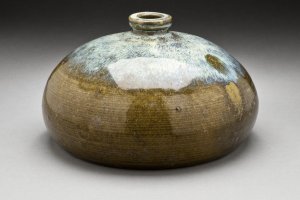Overview
Japan's eight regions are home to the nation's forty-seven prefectures. Along with their own individual identities, each prefecture is represented by at least one traditional craft recognised by the national government. Ranging from pottery and textile traditions to metalworking and wood crafts, Japan's regional crafts are a peek into the heart of culture and heritage. Here is an introduction to some of the traditional crafts that make up the eight regions of Japan.
Chubu
The Chubu region of Japan sits in the centre of the main Honshu island. Made up of nine prefectures - Aichi, Fukui, Gifu, Ishikawa, Nagano, Niigata, Shizuoka, Toyama and Yamanashi - Chubu's traditional crafts include the nation's most widespread style of pottery, elegant paper lanterns, blade and sickle metalcraft, gorgeously decadent gold leaf, silkworm and ramie plant textiles as well as doll accessory crafts, traditional paper and lacquered deer leather.

Chugoku
The five prefectures that make up Japan's Chugoku region - Hiroshima, Okayama, Shimane, Tottori and Yamaguchi - are to be found in the westernmost point of Honshu. Also to be found are Chugoku's traditional crafts. These crafts are nationally recognised and feature calligraphic brushes, an ancient tradition of pottery, the mathematical detail of the abacus, blue-collar cotton farmer fabric and an inkstone crafting tradition where the craftsperson does the quarrying.

Hokkaido
Japan's northernmost region, Hokkaido is the only region that is its own prefecture. Befitting this unique status, the traditional craft of the region also happens to be the traditional craft of the Ainu people who now make Hokkaido their home. These crafts include wooden tray designs and bark cloth textiles with both crafts representing an Ainu sense of affinity with nature that differs somewhat from the rest of the country.

Kansai
Seated in the south-central region of Japan's main Honshu island, the Kansai region and its seven prefectures - Hyogo, Kyoto, Mie, Nara, Osaka, Shiga and Wakayama - are a repository of eclectic traditional crafts that can be elegant, odd and practical. The curious fly fishing baits are complemented by sophisticated embroidery, stencilling, understated bamboo whisks, individualised pewterware, robust pottery and charming lacquerware.

Kanto
Home to the nation's capital, and the most populated region of the country, the seven prefectures of Kanto include Chiba, Gunma, Ibaraki, Kanagawa, Saitama, Tochigi and Tokyo. Kanto's traditional crafts naturally showcase a wide range of traditions, featuring intricate summer bamboo fans, delicate silk weaving, stone lanterns, wood carved marquetry patterning, as well as charismatic wooden dolls, rustic pottery and bamboo fishing rods.

Kyushu
Introducing Kyushu's traditional crafts is no easy task. The region's eight prefectures - Fukuoka, Kagoshima, Kumamoto, Miyazaki, Nagasaki, Oita, Okinawa and Saga - are home to an impressive variety and feature life-like unglazed clay dolls, naturally dyed silks, a stellar range of unique styles of pottery and ceramics, bamboo crafts that also include classical weapons as works of art as well a rare craft based on tortoise shells.

Shikoku
Japan's Shikoku island region is home to four prefectures - Ehime, Kagawa, Kochi and Tokushima. Within these prefectures can be found not only unique local cultures but also some exceptional traditional crafts. These crafts include the understated beauty of indigo-patterned pottery, a lacquerware with a three-dimensional ambience, a free-range metalworking tradition of blade crafting and the summer boon of traditional cotton textiles.

Tohoku
The six prefectures of Honshu island's northernmost Tohoku region - Akita, Aomori, Fukushima, Iwate, Miyagi and Yamagata - feature traditional crafts that cover a wide spectrum of styles and techniques. Beautifully understated cherry bark craft, multi-layered lacquerware, ethereal porcelain, woodworked chest of drawers, charming wooden dolls and a thousand-year old iron casting heritage all make up the traditional crafts of the region.

































